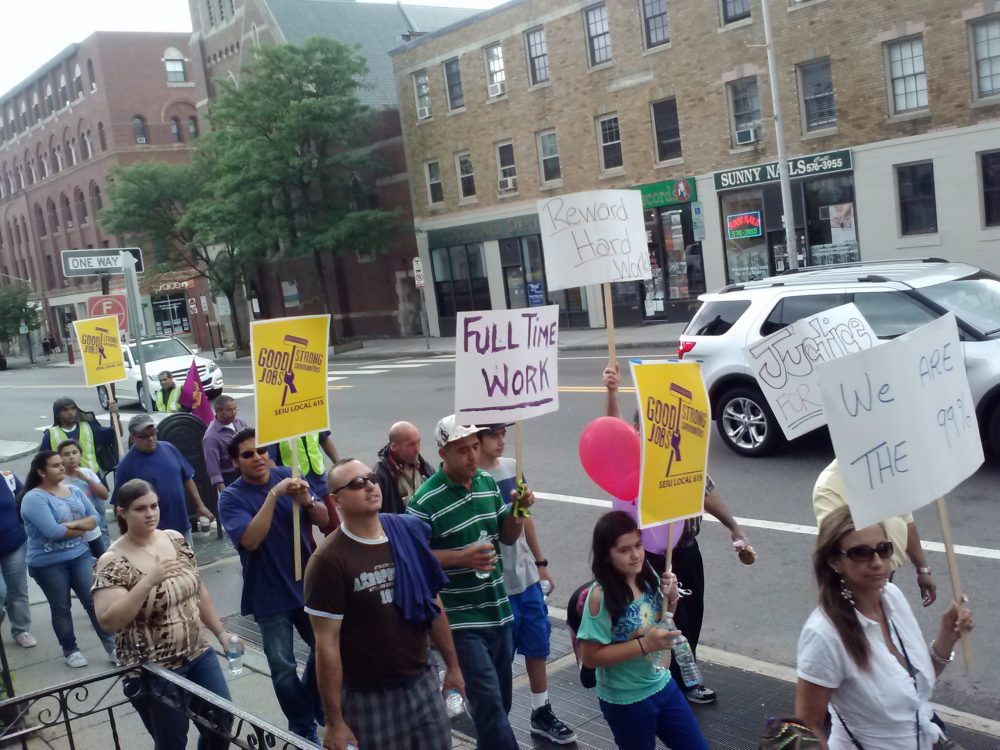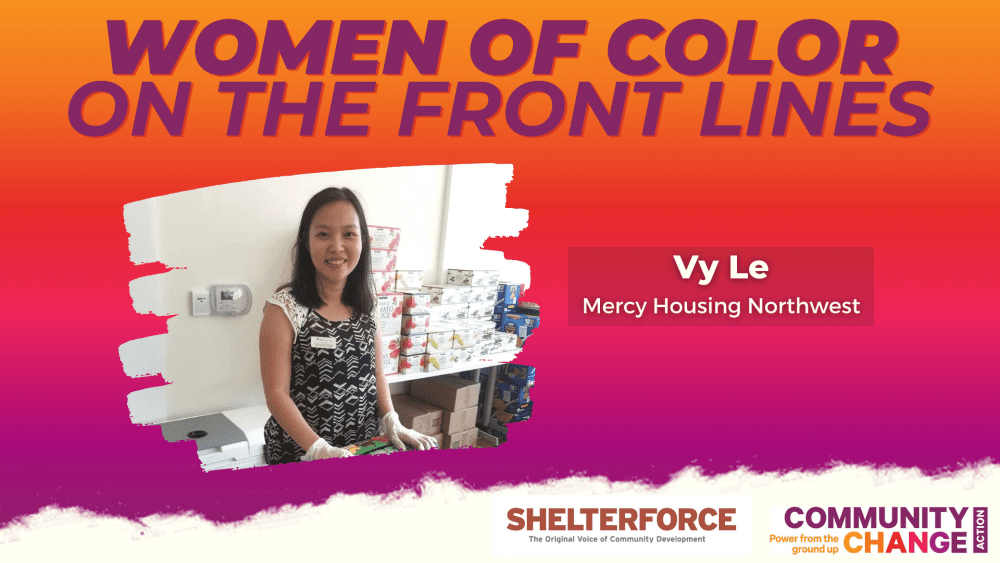“Good Jobs: Strong Communities” read many of the signs at the Labor Day rally and march in Cambridge organized by the Service Employees Industrial Union’s (SEIU) 32BJ that represents property service workers across the northeast.
As I listened to the speeches by union members and leaders, elected officials, and hopeful candidates about rewarding hard work with fair pay, the value of paid medical leave, freedom to unionize without harassment at the workplace, and pathways to citizenship for immigrant workers, I wondered what community-based organizations might have added to the day’s message had they been among the active participants.
Here are four possible messages for a Community-Labor Day take on “Good Jobs: Strong Communities”: stronger communities mean better jobs, good jobs make communities stronger, good work places strengthen community, and community and labor are stronger together.
1. Stronger Communities Mean Better Jobs
Affordable housing providers could reinforce the message of how important good jobs with living wages are to communities. Housers know all too well that workforce housing can’t work for many hard working families without substantial subsidies. A higher minimum wage would bring many residents closer to a living wage that can cover the cost of housing. Community development people could hold signs that demand employers to pay their share to house the nation’s workforce.
Community development actors could also call attention to their contributions to job creation. Low-income housing production yields construction jobs that pay decent wages and employment prospects spill over to retail, government, and social service sectors.
Moreover, community developers are training workers and creating job opportunities in building trades and energy efficiency. They’re also joining forces with local employers in the hospital and hospitality industries to create pathways out of low-wage jobs and into careers with the promise of security and mobility.
2. Good Jobs Make Communities Stronger
The community development perspective widens the lens on the effects of good jobs for communities. Higher wages mean families have more income to spend in neighborhood enterprises. Building the local economic base by strengthening resident workers amplifies community resources without gentrification. With better benefits, workers can care for their families with less financial and emotional stress and devote more time and energy to caring for the broader community. Youth jobs reduce gang violence and prepare the next generation for a life of rewarding career development.
A Community-Labor Day appeal could demand that global industries invest profits locally in addition to paying local workers’ decent wages. Community oriented appeals would tell employers that if they take advantage of our neighborhoods’ lower commercial rents and proximity to the targeted consumer base, it’s their responsibility to support the child care and schools that educate their workers’ children and workforce development programs to give them the skills they need to perform.
3. Good Work Places Strengthen Community
Community developers see workplaces as critical features of the community landscape. Community-Labor Day events could include forums for discussing the impact of commercial and other institutions' impact on communities.
The fast food restaurants and coffee shop chains that employ low-wage workers are often community meeting places by default. Community-Labor Day could spark discussions about how to support community, employee, and resident owned enterprises to fill the void.
Community- Labor Day debates could entertain the pros and cons of leveraging hospitals and big box retail establishments as anchor institutions to support local economic and community development. Speakers could compare case studies to weigh the potential of agglomeration effects against the pitfalls of low wages and poor benefits. Participants could strategize about community benefit agreements and local hiring provisions and consider prospects of enlisting the institutions’ support for food and medical waste disposal initiatives that mitigate environmental impacts of their presence in the community.
4. We’re Stronger Together
“Stronger Together” was another of the signs that evoked the potential for labor-community synergies. Community-based organizations and labor unions alliances are beginning to leverage the power of their united forces to advance many of the objectives noted above. For example, Boston’s Community Labor United is leading research and action campaigns to promote quality jobs in weatherization and energy efficiency, transit development, and other efforts to address the inequality and inequity of the city’s “hourglass economy.”
Community-Labor Day gatherings could focus on creative approaches to bridging different action strategies, organizational cultures, and time horizons to forge such alliances around the country.
Some questions they might explore:
How can community-labor alliances bring together fast food workers and low-wage consumers to fortify demands for better wages, career opportunities, and healthy food options?
How might unions’ institutional infrastructure help communities scale up development models and influence national and international corporate targets?
How can community-labor alliances make use of the combined local, state, and federal political leverage to advance common advocacy agendas?
(Photo by Laurie Goldman)






Comments